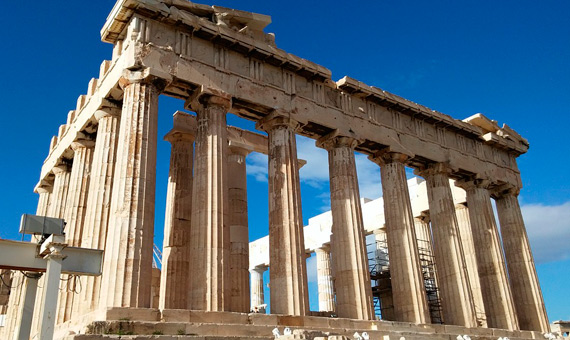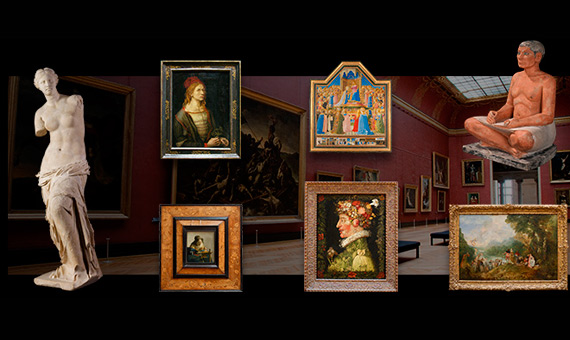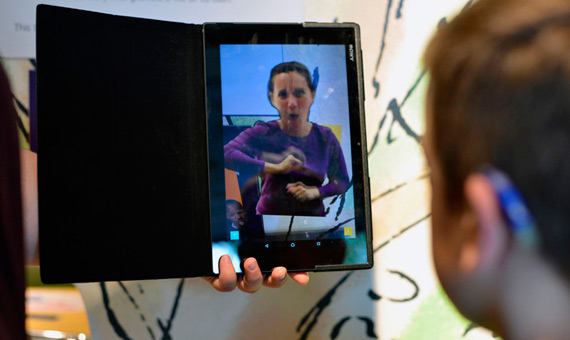Arthur C. Clarke, the science fiction writer who shot to fame with 2001: A Space Odyssey, is also known for formulating three laws that talk about the power of research and innovation to change the future. Of these three laws, originally published in 1962 in Profiles of the Future, the first has become particularly popular: “Any sufficiently advanced technology is indistinguishable from magic.”
Whether you agree or disagree with this statement, the truth is that the technological advances that have occurred throughout history have changed society. And if, in the words of Clarke, technology can be considered as “magic”, it is also able to start a revolution for museums. When these two ingredients are combined, we can refer to it as the culture of the future. But how do technology and museums intermingle?
Technology that makes museums accessible to all
If anything has been achieved by Google Maps, in combination with the Google Street View platform, it is that it has allowed us to “visit” particular locations, including an area preview. Thanks to the work of the Google Cultural Institute, which is indeed based on Google Street View, you can see significant cultural landmarks such as the Palais Garnier opera house in Paris, the Berlin Philharmonie concert hall and the Teatro Real opera house in Madrid, using only a screen and an Internet connection.
The organization also promotes the accessibility of art collections and museums, such as the ones dedicated to Eleanor Roosevelt, in New York, or African American History, in Boston. St. Paul’s Cathedral in London, the Coffee Museum in Brazil and the Greek Acropolis are other places that can be visited from home, thanks to Google’s initiative.
The advantage of these systems is that they bring us almost impossibly close, to the details of every work available, so that we can appreciate items that would otherwise have gone unnoticed.

It is not only the Google Cultural Institute that allows us to enjoy a visit to a museum or fascinating exhibit from the comfort of our home. In 2013, the Louvre Museum in France decided to develop a downloadable program that allows you to listen to the audio guide before visiting the museum – but in a different way.
By using a Nintendo 3DS game console, we can take a virtual walk through the Paris gallery and enjoy more than 600 photographs of artwork, 400 images of museum rooms and 30 hours of audio commentary. In this way, we can enjoy the art in the Louvre and even prepare our tour of the museum in advance.

More recently, in 2015, the famous British Museum in London announced a partnership with Samsung Digital Discovery Centre for devices such as Samsung Gear VR, to facilitate and enrich tourists’ visits. Thus, virtual reality is tailored to the needs of museums, for example offering 3D scans of exhibits in the collections of the British Museum, inviting us on a journey back in time to the Bronze Age.
Accessible to the visually impaired
Technology can bring us closer to art through virtual exhibitions or provide additional information on objects, paintings and artwork in a museum. But it also makes these places accessible to the visually impaired: 3D printing is a tool that can transform the experience of visiting a museum. The Met Museum in New York was a pioneer in introducing printers in three dimensions, enabling visitors to take home a souvenir from their galleries thanks to this technology.
In order for 3D printing to allow greater accessibility to European museums, the Ambavis project was launched with the support of the European Union. The idea is that 3D printers recreate “touch copies” for the visually impaired, so that they can also enjoy the exhibits. Austria, Germany and the United Kingdom are some of the countries in which this initiative is being implemented successfully.
In the same vein, the Museo del Prado in Madrid launched the exhibition “Hoy toca el Prado”, in collaboration with the AXA Foundation and the ONCE. Thanks to 3D technology, six representative works of different genres were exposed, including Apollo in the Forge of Vulcan, Nobleman with his Hand on his Chest or The Parasol, which could be touched by people with visual disabilities. In this way, visitors could recreate pictures mentally. The exhibition also featured texts in Braille, audio guides and opaque cardboard glasses.
Museums accessible to the deaf
If 3D printing has allowed museums to be accessible to blind people, mobile applications can facilitate visits for people with hearing disabilities. An example of the usefulness of this technology can be found in the museum dedicated to Roald Dahl, the renowned writer and author of children’s books such as Charlie and the Chocolate Factory and Matilda.

The app Signly, devised by Mark Applin, was created to facilitate the integration of deaf people. The aim of the app is that deaf visitors can enjoy the explanations of traditional audio guides, but using sign language and directly on their mobile phone. As announced in 2015, the Roald Dahl Museum has set up 24 points along the route where Signly can be used to learn more about the life and works of the famous novelist.famous novelist.
Museums accessible to everyone
People with blindness or deafness can benefit from new technologies to visit museums that were previously inaccessible to them. But what happens to those who, because of a physical disability, cannot leave their home? In addition to the virtual tours Google or the Louvre and Nintendo offer, robotics can also be a great ally for these people.
Since 2014, “telepresence” robots have been able to lead people with disabilities into every nook and cranny of a museum. Thus, patients with quadriplegia can enjoy exhibitions despite their physical disability. The use of robotics has already been implemented in the de Young Museum in San Francisco and the Computer History Museum in Mountain View (California).
The aforementioned technological advances, to quote Clarke, can be described as “magic”. But not for the advances offered; rather because they help us enjoy previously unimaginable experiences in museums. And especially, because they make exhibitions and artwork accessible to everyone. Thanks to technological innovation, it truly is “museum magic”.
Ángela Bernardo
(Hypertextual)
Comments on this publication